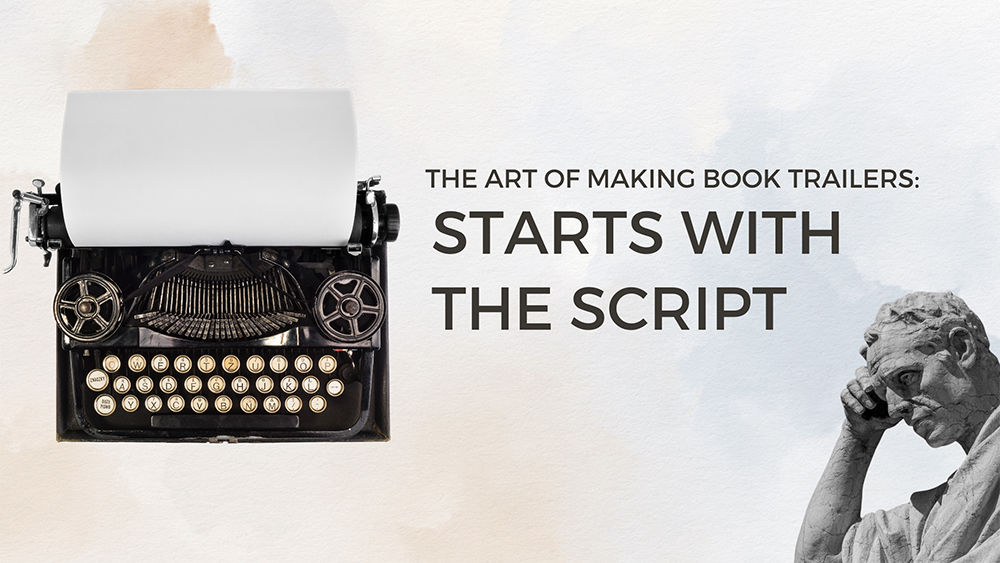I’ve been making book trailers professionally since 2018, but I’ve been editing video since 2006. To me, making a book trailer isn’t just a piece of marketing material (though, of course it’s that too). In my mind, it’s an art.
A book trailer is a form of artistic expression few people undertake. It is taking something – images conjured by words on a page that only exist otherwise in the imagination – and visualizing it in the physical world. It’s bridging the gap between the author’s intent and a reader’s interpretation.
It’s beautiful. It’s art.
And also… it’s a big responsibility.
As an author myself, I know how much heart and soul goes into creating a novel. I take it seriously then when someone chooses me to create a visual representation of the thing they’ve spent sleepless nights, blood, sweat, tears, and literally years of their life on.
I love making book trailers. Yes, I’ve made it a business, but it’s also a passion. No two books are the same. Whatever the genre, making a book trailer for it is always an adventure. And some plots, characters, or details have presented really fun challenges that are like puzzles for me to solve.
I was originally going to make today’s post about the top 10 mistakes people make when making book trailers… and I know that will be helpful for a lot of authors who might read this and so I’ll definitely write that in the future… but I’ve got something else I want to share in my heart today: Perspective.
As an author, if you are going to DIY your book trailer, I would like to encourage you to tap into your inner storyteller. You are good at that. It’s your greatest strength. So, use it. Don’t just throw together a book trailer with the bare minimum effort just because you’re checking it off a list. Put your heart into it. Your book deserves it.
Impressive visuals, motion graphics, and special effects aside, a great book trailer always, always, always starts with a great story.
And that means, starting by writing a script.
You may be tempted to jump right into slapping visuals into video editing software and seeing what sticks. If you do this, you run several risks:
- Confusing Readers (What is this book about?)
- Having your book trailer run too long
- Getting frustrated yourself because the visuals you like aesthetically are not actually reflecting your book
- The project ends up taking way longer than you intended because you keep changing direction over and over
I don’t even open my video editing program at all until the script is finished.
The one caveat to this – which doesn’t affect you as the author but is because I’m experiencing the book as a reader – is that as I am reading the book, I will often make notes and sometimes begin what I call a “preliminary media search” which is like a painter putting together a palette of colors she might or might not use later. As I’m reading, maybe an item in a scene strikes me in a powerful way, and so I’ll collect some potential stock images that might represent that and save them for later. 99% of these things aren’t used. This is just part of my internal process.
But I do not put a single brushstroke down on the canvas until I have the script.
A book trailer always starts with the story.
Tips For Writing a Book Trailer Script
First, you’ll need to decide how long you want your script to be. When I make book trailer, I make them in increments of 15, 30, and 60 seconds. People have short attention spans. You should try to keep your trailer to about a minute or less if you can.
Second, consider the voice. Is it going to be first person narrative? Third person? Or will you have two characters speaking? Present tense or past tense?
You can choose to match the POV of the text, or you can choose to use the book trailer as an opportunity for a reader to get a look inside the MC’s head.
Make sure you don’t give away too many spoilers. And also, focus on ending on a cliffhanger or a note that otherwise entices people to want to know more about the book. (And therefore read it!)
Book Trailer Script Examples
Second Son Book Trailer
Script:
The last thing I remember . . . before the world went dark . . . was watching my arrow find its mark saving my uncle from almost certain death. And the look on my victim’s face as he turned toward me in his final agony. The distant thunder of hoof beats—a troop of knights rushing to my aid— but too late to save me.
I have no expectations of rescue, for I am a second son of a second son. For the sake of the realm, despite the love he bears for me, my Grandfather the King will refuse to negotiate for my return. He is right to do so.
Thus I’m held hostage for a ransom I know will never be paid. Each day of captivity carries me farther from my kingdom and the arms of the woman I love. Something I know gives me strength, but will it be enough to get me home again?
Notes:
This was told from the MC’s point of view. I started the script with actual text from the book, which was then modified slightly to be more script friendly. As the script goes on, it touches on the main conflict of the book without giving away spoilers of the story.
Regarding how the script impacts camera movement and composition: consider the contrast between these two shots in this piece.
On the line “I have no expectations of rescue” Alfred has just been captured. The shot is a dense forest, low to the ground with a camera motion moving forward. This feels dark and closed off.
For “Each day of captivity carries me farther from my kingdom” I wanted that moment to feel vast and hopeless. So the viewer is floating high above a huge space with mountains, distant from the forest below, with a camera motion of moving backward which hits on the words “farther away”in the script. Also, we see that it is now autumn, as if time has elapsed which further exacerbates the distance from that earlier shot inside the forest when it was summer.
- Shot 1
Low
Dense Forest
Forward Motion
Summer - Shot 2
High
Mountains (Distant from Forest)
Backward Motion
Autumn
The point is this:
You use metaphors in your writing. Use visual metaphors in your book trailer. You don’t have to be literal when visualizing the script. Consider how your character feels or where they are and translate that to a visual.
The Five Wishes of Mr. Murray McBride Book Trailer
Script:
On my 100th birthday, I quit the pill keeping me breathing. I miss my Jenny. I miss my boys. But God has other plans for me in the form of a ten-year-old named Jason.
Jason’s got a bad ticker and not much longer to live. So, the kid scribbles a list of 5 wishes before he dies.
I’ve got a reason to take that pill and stick around after all. They’re not just Jason’s wishes now, they’re mine, too, see?
By some miracle, maybe we’ll both come back to life.
Notes:
Make the voice of your script echo the voice of your character. Phrases like “my Jenny” “bad ticker” “take that pill” “they’re mine, too, see?” feel authentic to Murray’s character.
Having a strong opening line is also important. “I quit the pill keeping me breathing” is a bold, attention grabbing statement.
By ending on an uplifting note with “By some miracle, maybe we’ll both come back to life,” the whole script moves on a trajectory from despair to hopefulness.
Telling a Story Without Words
Even in cases where there is no voiceover, there is still a script. See if you can follow the narrative created for this book trailer, In the Lair of Legends by David Buzan.
If you need help
I hope you found these insights on writing a book trailer script helpful. If you would like to check out more examples to refer to, visit my book trailer portfolio on my website: ElectraFox.com. If you have questions, drop me a line on Twitter @electrafoxbooks.

